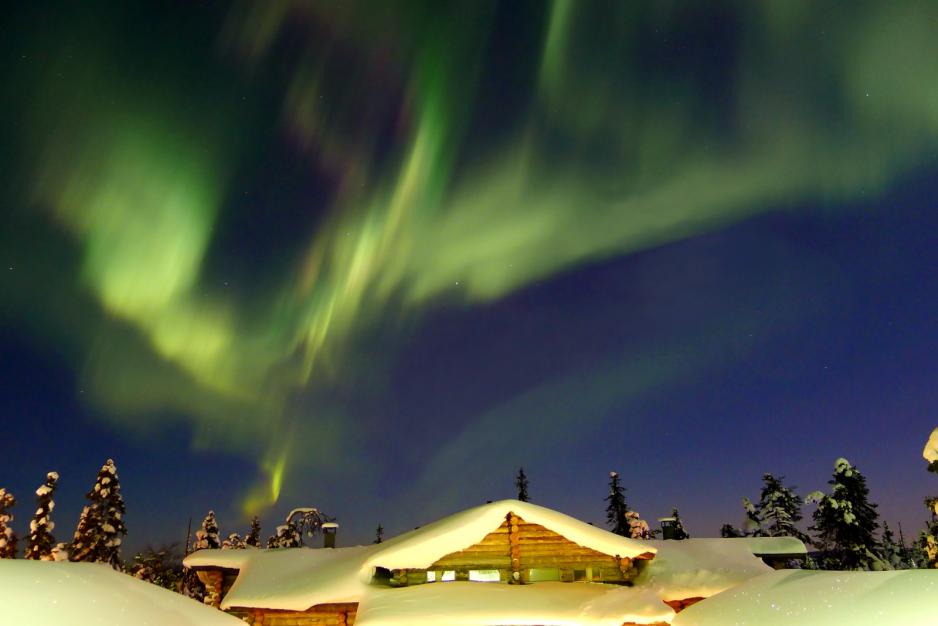Arctic Council: Finnish Chairmanship Last SAO Meeting

Northern lights in Ruka, Finland (Photo credit: Timo Newton-Syms/Wikimedia Commons).
As the 2017-2019 Chairmanship of the Arctic Council is coming to an end, the Senior Arctic Officials meeting in Kuusamo, Finland this week provides a good platform to reflect on the achievements and potential shortcomings of the Finnish chairmanship since US Secretary Tillerson passed the gavel to Finnish Foreign Minister Soini in May 2017.
Almost two years have passed since Finland took over the chairmanship of the Arctic Council, and as Senior Arctic Officials (SAOs) are gathering in the small ski resort of Ruka in Kuusamo, Finland, a mere 50 kilometers from the Russian border. The Arctic Council has emphasized that the SAOs will mainly focus on finalising the initiatives and projects on the agenda during Finland’s Chairmanship of the Arctic Council before Iceland become the new chair the Arctic Council after the next ministerial meeting, which will take place in Rovaniemi later this year in May.
Reflecting on the Finnish Chairmanship
During its chairmanship, Finland chose to focus on the four following theme: environmental protection, telecommunications and connectivity, meteorological cooperation, education and training. As the SAO meeting provides the Arctic Council with a good opportunity for the Working Groups to present their results on these themes, let’s take some time to reflect on the achievements and potential failures of the Finnish chairmanship.
Much Work But Little to Show for?
Managing Editor of the Arctic Yearbook, Heather Exner-Pirot says that her main criticisms of the Finnish chairmanship is that it does not seem there are any big accomplishments coming forth, in the sense of a new agreement, or organizations established such as the University of the Arctic or the Arctic Economic Council, or even some signature reports like the 2004 Arctic Climate Impact Assessment (ACIA) or the 2009 Arctic Marine Shipping Assessment (AMSA).
But, Exner-Pirot also remained cautious in her criticism of the Finnish chairmanship. She emphasized that maybe Finland and the Arctic Council are just keeping their cards close and will be revealed at the Rovaniemi Summit later this year in May.
Keeping Arctic Exceptionalism Alive
Gauging the success of the Finnish chairmanship is not an easy task. Compared to previous chairmanships, Finland’s could be viewed as relatively quiet and, at times, it even seems that not much has been achieved since May 2017. However, according to Professor of Arctic and Antarctic geopolitics at the ILERI School of International Relations (Paris, France), Mikaa Mered, the biggest accomplishment of the Finnish chairmanship is managing to keep Arctic exceptionalism alive.
Mered points out that escalating tensions outside the Arctic between several Arctic Council Member States and even some Observer States could have hampered the quality of the work produced during this chairmanship. Yet, during its chairmanship Finland has managed to keep everyone at the table. According to him, “There is a bulletproof wall between Arctic-related issues on the one hand and other global issues on the other. It may sound cheesy but, given that the Arctic Council still remains a simple consensus-based forum with no independent law-making authority.” Given the magnitude of the tensions, Mered believes that keeping every actor onboard, genuinely active and cooperative, at the table is an achievement that should not be overlooked or underestimated.
Success Behind the Scenes and in WGs
Can the Finnish chairmanship be viewed as a success? Mikaa Mered believes so. Of course, he says, it was not a spectacular chairmanship like the previous one (US Chairmanship 2015-2017) when the world watched Barack Obama become the first US president to set foot in the Arctic, or even when Denmark was in charge and invited world leaders to Nuuk in 2011, but the Finnish chairmanship has been a very effective chairmanship. A lot of very important work has been accomplished behind the scenes, as well as in the working groups, under Finland’s leadership.
At the Ruka SAO meeting, the six Working Groups, both Task Forces and the Expert Group will altogether present more than 45 deliverables to the Senior Arctic Officials. According to Mered, “this is a fantastic body of work that shows the ever-growing importance of the Arctic Council as a region-wide norm and knowledge broker. It also shows that Arctic cooperation amongst State actors inasmuch as with non-State actors is strong and is gaining further traction, even outside the Arctic. Finally, the number and the diversity of the applicants for observer status that are to be considered at the next Ministerial meeting are also proofs that this chairmanship has been a success.”
Clear Lack of Ambitions …
Among the shortcomings of the Finnish chairmanship, there might have been a lack of ambitions about what the council could actually achieve. As Exner-Pirot remarks, when asked what the year ahead has to offer the Arctic Council in various interviews, the SAOs were all quick to answer “peace and stability and ongoing cooperation”. As though it would be enough for the Arctic Council to maintain peace and stability in the region between east and west and Indigenous and non-indigenous. However, Exner-Pirot outlines that If the council’s mandate is simply to maintain peace and stability, is there really a need for all these task forces, working groups, and 50 projects? Although Exner-Pirot says that she is looking forward to seeing the new strategic plan, she also adds that the role of an organization cannot just: thinking about an organization’s role.
… Or Display of Finnish Pragmatism?
What might look like a lack of ambitions could be a display of Nordic pragmatism. As Mered points out, Finland has approached this chairmanship with the aim to “explore common solutions”, and given the objectives and the limitations inherent to the way the Arctic Council currently works, such a “program was timely, balanced and well executed.”
As the Finnish chairmanship comes to a close, Mikaa Mered does not see how Finland could had done things in a better way. “Granted”, he said, “a summit with the eight Arctic heads of State, or just one between Presidents Trump, Putin and Niinistö, would have been historical.”
This does not mean there is no room for improvement. On the contrary, Mered thinks it could have been useful to question the Council’s role and organization even further, such as improving core and projects funding, turning the Amarok Tracking Tool into a comprehensive project evaluation tool, expanding debates on sustainable development to actual economic growth and even more. “There is always room for improvement”, Meredd adds, “and there are numerous challenges left to dig into but, in two years, there is only so much one country can do, especially when tensions in trade, energy and security arise between global superpowers at the same time.”
Time to Celebrate
As always, time will only tell whether the Finnish chairmanship can be deemed a true success, and whether the Icelandic chairmanship will bring about change or continuity for this high-level intergovernmental forum. The Arctic Council is in need of structural improvements, and changes will come with the new strategic plan, but as far as the Finnish chairmanship is concerned, the SAO meeting taking place in Ruka this week is the last opportunity for the Finnish-led Arctic Council to showcase its works before the ministerial meeting in May. For now, as Mered concludes, “let us appreciate the work done here. It is now up to Iceland to follow up on all the avenues for cooperation and doors opened by Finland in these past two years.”

